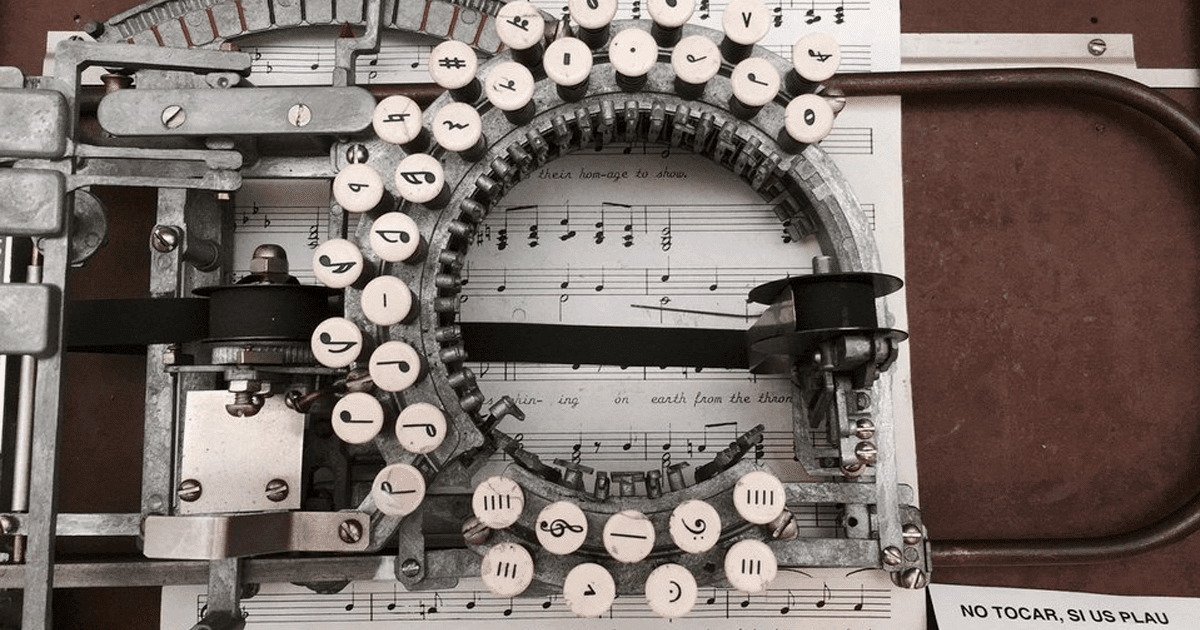
Woody Allen said he's written all of his scripts and The New Yorker pieces on a typewriter. That’s 60 years. And it worked for him just fine. Typewriters are making sort of a comeback today. Arguably one of the most desired ones is the Keaton Music Typewriter and that's for a good reason. First patented in 1936, it was designed and produced to hammer out musical notations, not letters or numbers.
The original patent was for a 14-key typewriter, that was updated to 33 keys and significantly improved in the 1953 patent. Marketed in the 1950s, it sold for approximately $255 (about $2,415 in today’s money). Keaton was trying to create something which would print characters precisely on staff and indicate precisely where the next character would be printed to ensure accuracy and ended up with a circular keyboard that gives the typewriter a distinct look.
Users of the device control where the notes and characters fall on the page with the help of the curved meter on the left that Keaton called the Scale Shift Handle and Scale Shift Indicator. Moving the handle up or down a notch will tell the typewriter how much to adjust, printing 1/24 of an inch in either direction. Moving one notch up or down will cause the character to fall one musical step either way.
“One keyboard is adapted to type one class of music characters such as bar lines and ledger lines, which, when repeated, always appear in the same relative spaced positions with respect to the [staff] lines… and a second keyboard adapted to type another class of musical characters, such as the notes, rest signs, and sharp and flat signs, etc., which may, when repeated, appear in various spaced positions with respect to the [staff] lines,” Keaton wrote.
To ensure that whoever was using the typewriter could see where they were about to print, Keaton included a long needle next to the ribbon which leaves nothing up to chance. Interestingly, the two keyboards work in different ways with the Scale Shift Handle. The larger keyboard with the notes, scales, sharps, and flats moves freely in tandem with the Scale Shift Handle. The smaller keyboard (which contains items like bar lines and ledger lines) stays in place since its characters always appear in the same place concerning the staff lines.
The result, unlike manuscripts, was supposed to be of publishable quality. It made it easier for educators, publishers, and other musicians to produce music copies in quantity. On the other hand, composers still preferred to write their music out by hand. Yet, because of its incredibly thin niche, we can’t know for sure if the product was a commercial success or a bust. However, its originality has made the Keaton Music Typewriter a desired collectible. Though it is believed that only around a dozen of them remain in working condition, sometimes they can be found on online auctions selling for about $6,000-$12,000.








Watch the Keaton Music Typewriter in action below:
Here's what people had to say about this distinct machine:




















COMMENTS